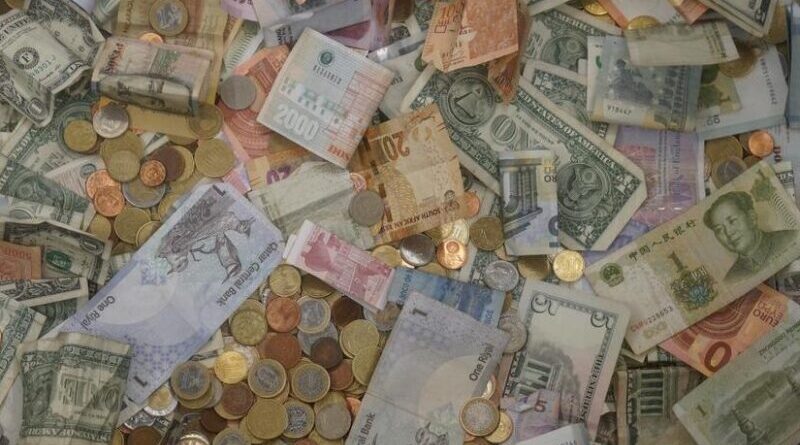World Needs A Strong WTO Despite Its Failings – OpEd
By Arab News
By Ranvir S. Nayar*
The last few years have been especially terrible for the World Trade Organization (WTO), as it has spent most of its time watching the action on global trade from the sidelines. When it was created in 1995, replacing the previous loose arrangement of the General Agreement on Tariffs and Trade (GATT), the WTO was meant to be a single, multilateral platform to unify and harmonize global trade, create some basic rules of fair treatment and protection for the weaker, smaller nations against the global giants.
One of the key mandates of the WTO was to integrate the numerous bilateral and plurilateral agreements between countries or regions into the global trade system in order to create a uniform system that would boost trade by not only opening up new markets around the world, but also by removing differential tariffs that countries often applied on all but a few of their favored trading partners.
The WTO started off on the right note. One of its key early achievements was to bring China, the country with the biggest market in the world, into the global trading system. With China’s integration in 2001, global trade boomed as, over the next decade and a half, the Asian giant became the world’s factory and began shipping goods — often made by Western companies in their own factories or outsourced to Chinese manufacturers — to practically all corners of the planet.
China’s entry into the global trading arena was a boost for consumers as it democratized the market for almost all products that could be made in a factory. It was thanks to China’s WTO membership that consumers of a wide range of products — from textiles and telephones to cars and computers — saw a sharp fall in prices, thus raising the affordability of several goods that had hitherto been too expensive for a vast majority of them.
Another significant achievement of the WTO has been to enforce a rules-based trade regime, which has allowed even a small nation like Guatemala to take on the EU, the world’s largest single market, through the organization’s dispute settlement mechanism. In the last 24 years, more than 500 trade disputes have been brought to the body by various member states and nearly 350 rulings have been issued. This system has played a key role in smoothing global trade.
The WTO has also managed to bring on board a very large number of other nations. It began with the 128 countries that had signed up to the GATT in 1994. Today, it counts 164 nations as full members, 20 that are currently in negotiations for accession, and a number of international organizations that are observers. By taking the membership to practically every country on the planet, the WTO has tried to create a level playing field to ensure that smaller members do not get trampled upon by the large economies, which are often hundreds of times bigger.
But it is also here, in creating a level playing field, where the WTO has failed in its objective. When it was launched in 1995, developing nations had been complaining that they had not obtained a fair deal from the developed countries and there were large trade imbalances. It was with the objective of helping developing countries boost their exports by providing access to the promising markets in developed nations that, in 2001, the Doha Development Round of negotiations began. These negotiations were meant to be wound up with a broad agreement within four years. However, nearly two decades later, the negotiations are still nowhere near completion.
In order to boost the economic growth of the developing nations, the Doha talks centered around the principle of special and differential treatment for the poorer nations. One of the basic issues was ending or lowering farm subsidies in developed nations as agricultural products were, and still are, the biggest component of exports of practically all developing countries around the world. By cutting farm subsidies and opening their markets to food imports, the developed nations were meant to create a favorable ground for the developing world. In addition, the developed countries were also supposed to lower their tariffs on other imports from developing countries, which in turn were meant to open their markets to services, notably financial services. But the Doha round is still stuck, primarily because the developed world has reneged upon its promises of opening up its markets to exports from developing countries. As a result, talks on the further liberalization of trade, as well as setting the basic rules and framework for the “new economy” and technology-driven services, have been blocked or moved at a snail’s pace.
The lack of progress has led a large number of countries or regions to proceed with their own bilateral trade agreements, thus weakening the position and importance of a global trade system. WTO records indicate there are a total of 291 such trade agreements that exist today, and a large number of these have been reached in the last 15 years, since the derailment of the Doha negotiations.
Even in areas of dispute settlement, the WTO is facing a serious challenge, as the US, unhappy with some of the recent rulings, has refused to allow the nomination of judges to the dispute settlement body, thus virtually paralyzing the mechanism.
It may be imperfect and still far away from delivering on its promises, but the world needs the WTO to be a strong and robust body that can make hard decisions and implement the penalties as required.
- Ranvir S. Nayar is managing editor of Media India Group, a global platform based in Europe and India, which encompasses publishing, communication, and consultation services.

